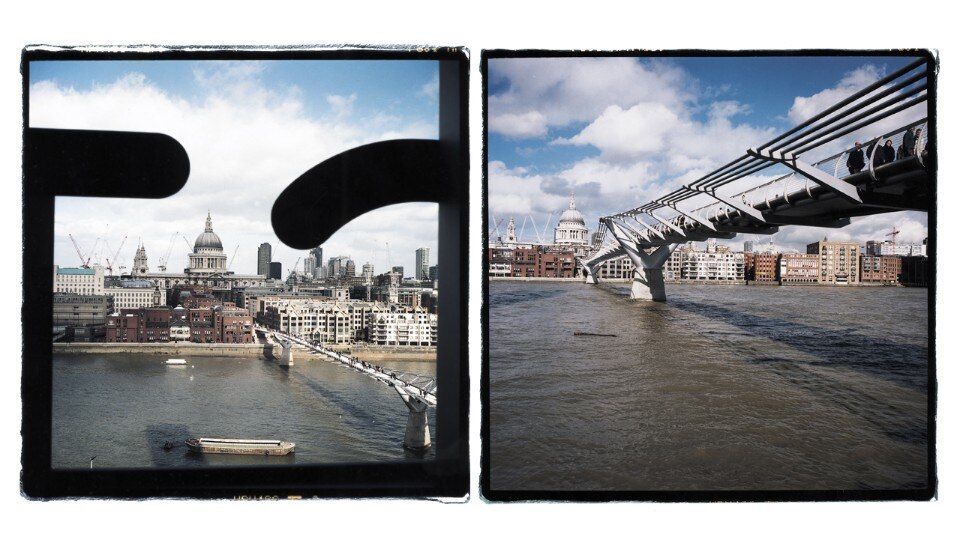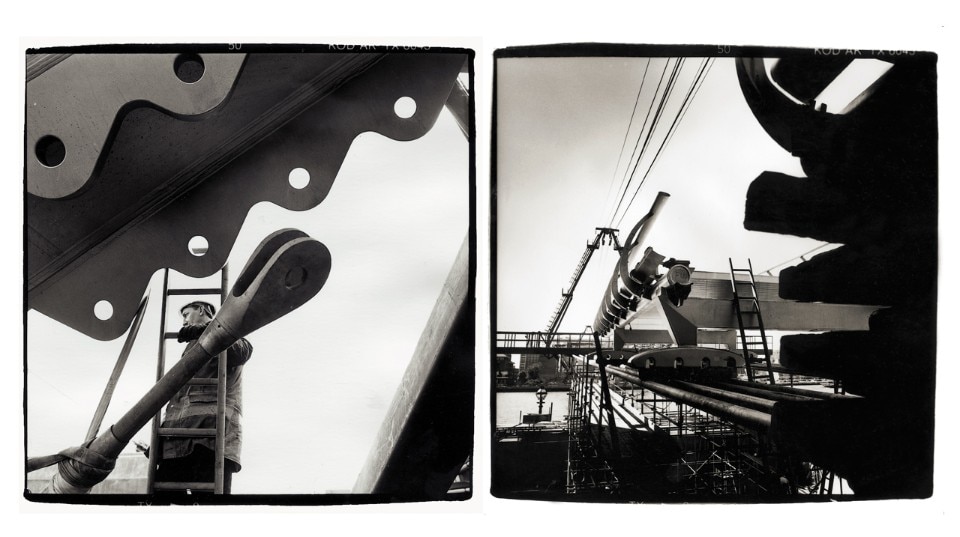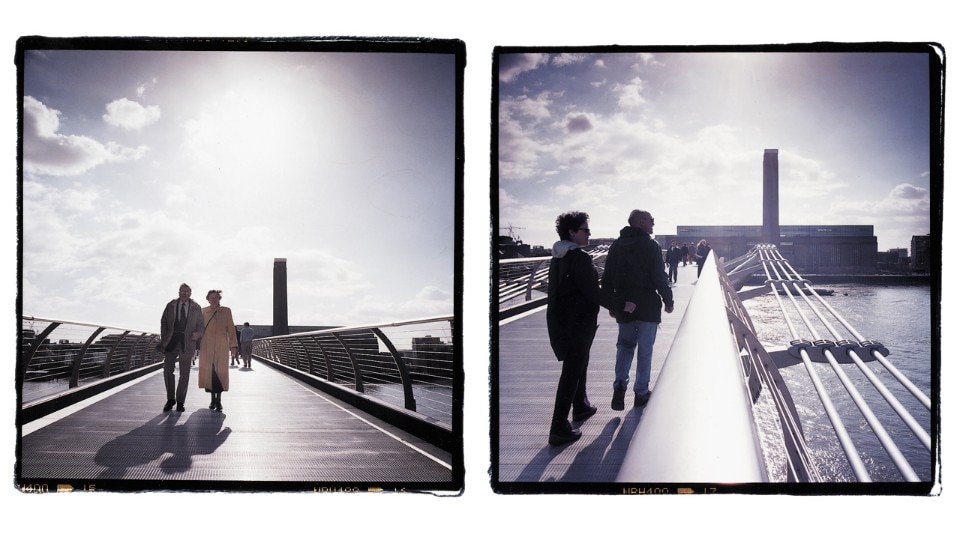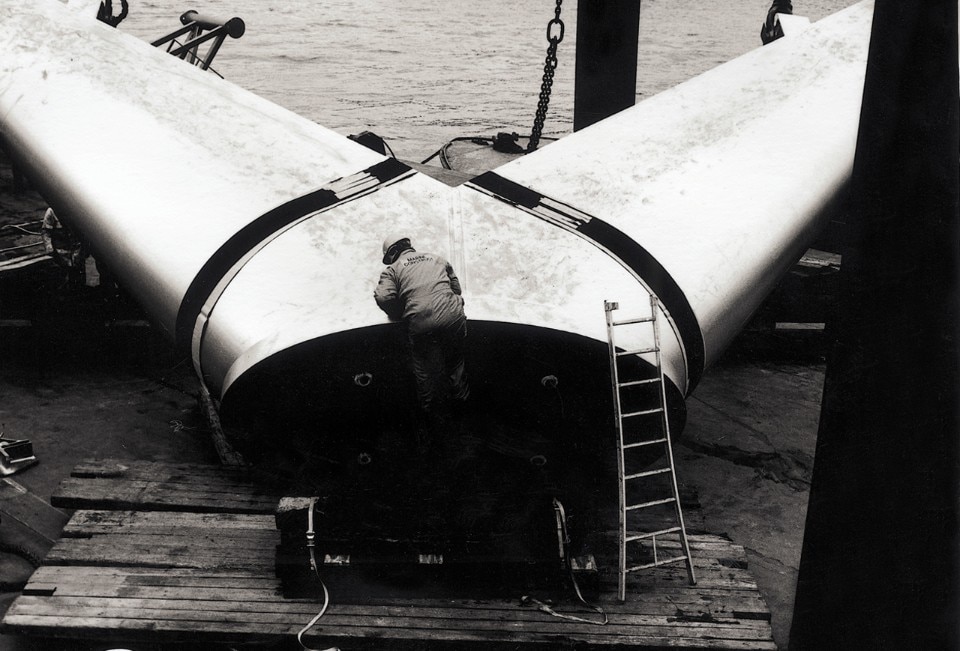Last month, when the most famous wobbling bridge in the world finally reopened, I looked back at a text that I wrote about London’s new footbridge for the Observer, the British Sunday newspaper, that appeared somewhat embarrassingly on the day the bridge was shut just hours after its first official opening. ‘The great thing about the seven-minute walk from Bankside to St. Paul’s across London’s first new bridge in a century, as compared with a trip around the London Eye, say, is that you are actually going somewhere. ‘The bridge has the effect of not just changing how a key part of the river looks, but also how it functions. For the first time it’s possible to walk directly from the trading floors and corporate headquarters of the north bank to the ducking-and-diving, south-of-the-river world that is still at the heart of Southwark, despite the epidemic of urban regeneration triggered by the Tate. ‘Negotiating the bridge is also an intensely physical experience. Under a thunderous gun-metal-grey sky, there is the unmistakable gamy tang of lowtide London mud in the air. You can feel the beginnings of rain in the breeze and the slight bouncing judder of aluminium underfoot’.

Risdill- Smith mentally reviewed all the calculations, all the safety assessments, all the wind-tunnel tests, even the giant hydraulic tank in Canada used to measure the bridge’s resistance to water. None of them had predicted anything like this. This was simply not supposed to happen. All of his experience as an engineer told him that the bridge ought to be stable, and that it was certainly safe. But even he must have seen that image of the great Tacoma Narrows suspension bridge shaking itself to pieces in 1940 flashing through his mind. The police promptly cleared and closed the bridge, giving the experts time to work out what had gone wrong and how to fix it. As engineering disasters go, the great wobbly bridge fiasco might seem pretty tame. Nobody suffered so much as a bruise. But to see such a highprofile design closed down so soon after opening was a humiliation for Arup, the fiercely proud engineers who have made everything from the Sydney Opera House to the Hong Kong and Shanghai Bank tower possible. What made their embarrassment so irresistible to the more pedantic of their fellow engineers, who rushed to make judgements about what had happened, was that they seemed to have brought it on themselves.
The word was that they had allowed Foster to push them into flouting the sensible limits of design. ‘Of course this bridge was going to wobble, just look at it’ became the consensus. With its lowslung outriggers and its very flat profile, the ‘blade of light’ looked like no other bridge. It was presented as a piece of typical, too-clever-byhalf arrogance. Stray too far from the tried and trusted and you’ll get into trouble was the subtext of much of the debate. But according to Tony Fitzpatrick, who lead the Arup team struggling to find a solution, ‘It’s not what is different about the bridge that caused the problem. Every issue about the bridge that was innovative worked perfectly. What hit us on the back of the head was that bit of the bridge that was the same as every other long-span bridge. We assumed that it would work like other bridges have until now; that was the mistake’.


Without the engineers, the bridge would not stand up. Without the architects, there would never have been the manic attention to detail that treated the design of ever bolt head and weld as a major architectural issue. Without Foster’s design skill and highly effective championing of the bridge against doubters, it would never have been built. And without Caro? In its present form it’s hard to see Caro’s direct involvement, but without him it would have been an entirely different bridge. He remained fully involved with the project, even when the original design, which would have borne his signature more clearly, was modified in response to the competition judges’ request for a less sculptural design.
‘People ask me, “Which part of the bridge is yours?”’, says Caro. ‘And of course I can’t point to any single aspect of it. But that isn’t really the issue. The idea of a sculptor, an architect and an engineer working together is what really makes this bridge different, and I was there when all the important decisions were made. Asking a sculptor to do a handrail at the last moment is the old-fashioned way of working. We did it the newfashioned way, and that was wonderful. I’ve learned that architects think differently from us artists. We can say things they wouldn’t dare to, like “Why not try it upside-down?” We think from an unexpected standpoint. We don’t take practicality into account. On the other hand, they can tell us quite a bit about scale’.


